R (Rainbow) class submersibles (1930)
 Patrol Submersibles 1929-1931:
Patrol Submersibles 1929-1931:
HMS Rainbow, Regulus, Regent, Rover
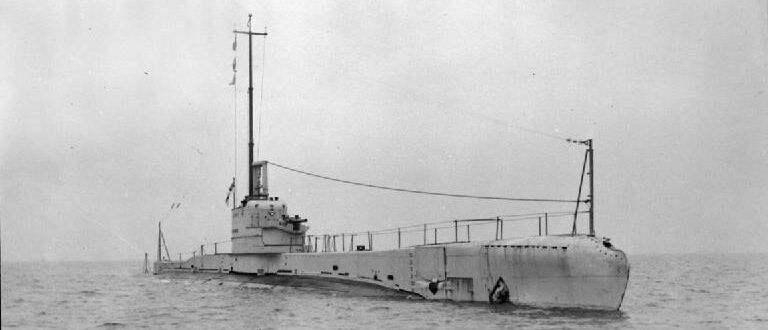
The Rainbow-class submarine (R class) were four patrol submarines built for the Royal Navy in the early 1930s. Although six were envisioned at first, only four were completed due to budgetary reason. The class comprised the HMS Rainbow, Regulus, Rover, and Regent. They were in straight line derived from the Parthian or P class, and like them destined for the far east. Only one made her career there, and survived. The four were repatriated in Alexandria, served in the Mediterranean, and two were sunk by mines, one by collision. HMS Rover survived a bombing in Crete and was being repaired at Ceylon when the Japanese attack commenced in early 1942. She became a Training Submarine in 1945.
⚠ Note: This is a starter article, to be Completed at a later date.
❯❯❯❯❯❯❯❯❯❯❯
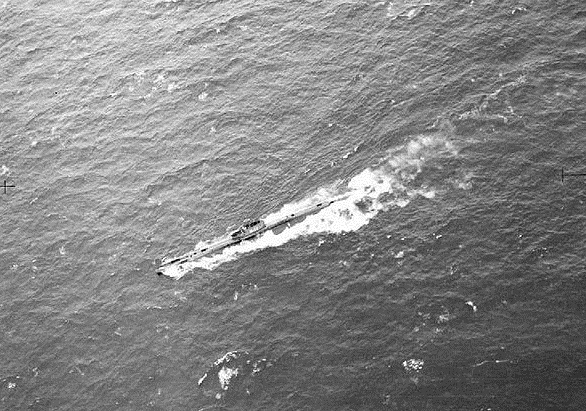
HMS Regent, seen from a plane in the Mediterranean, 1941
Design of the class
The Rainbow-class submarines were designed as improved Parthian class, also for long-range operations in the Far East, but yet smaller and more economical than the larger Odin and even the Parthian. They measured 287 feet 2 inches overall, for 29 feet 10 inches in beam and had a mean draft of 13 feet 10 inches (4.2 m). Displacing 1,772 long tons (1,800 t) surfaced and 2,030 long tons (2,060 t) submerged they carried a staff of 56 crewmen, and were capable of diving down to 300 feet (91.4 m).
Powerplant: It comprised for surface-running two 2,200 bhp (1,641 kW) diesels, connected to a propeller shaft each. Submerged power came from two 660-horsepower (492 kW) electric motor enabling a durfaced top speed of 17.5 knots (32.4 km/h; 20.1 mph) and 9 knots (17 km/h; 10 mph) underwater. Their range, always surfaced, reached 7,050 nautical miles (13,060 km; 8,110 mi) at the cruise speed of 9.2 knots (17.0 km/h; 10.6 mph) but down to just 62 nmi (115 km; 71 mi) undderwater at 4 knots (7.4 km/h; 4.6 mph).
Armament: The four boats had the same six 21-inch torpedo tubes in the bow, two more in the stern. They just carried a reload for eaxch of the bow tubes, so a grand total of fourteen torpedoes in all. They also carried the same QF 4.7-inch (120 mm) Mark IX “deck” gun. Like on previous class the gun was carried in a structure and well protected, typical of this generation of British submersibles.
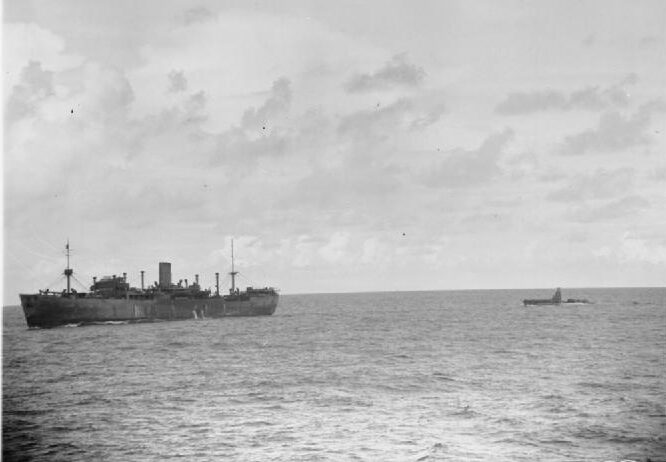
HMS Rover surfacing close to a British AMC in the Mediterranean
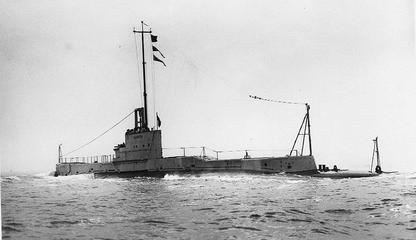
HMS Rainbow, stern
⚙ R-class specifications |
|
| Displacement | 1,760 long tons (1,790 t) surfaced, 2,040 long tons (2,070 t) submerged |
| Dimensions | 289 x 30 x 16 ft (88 x 9.1 x 4.9 m) |
| Propulsion | 2 shafts Admiralty diesels 4,640 hp (3,460 kW), 2x EM 1,635 hp (1,219 kW) |
| Speed | 17.5 knots (20.1 mph; 32.4 km/h) surfaced, 8.6 kn (9.9 mph; 15.9 km/h) submerged |
| Armament | 8 × 21 in TTs (6 bow, 2 stern), 14 reloads, QF 4 in (102 mm) Mk XII, 2× 20 mm AA |
| Crew | 53 |
The Rainbow class in action
 HMS Rainbow
HMS Rainbow
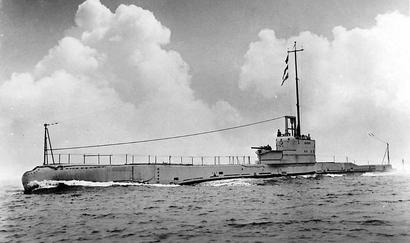
HMS Rainbow served in the Far East until 1940, and then moved to the Mediterranean to face te Regia Marina. She was on patrol off Calabria on 23 September 1940 but disappeared as reported later, believed to have been sunk on 4 October in a collision with the Italian merchant ship Antonietta Costa reporting a massive underwater explosion after a schock, while underway in convoy from Albania. And until 1988 some historians advanced she had been sunk by the Italian submarine Enrico Toti, but this proven to be HMS Triad so the collision is the theory that remains.
 HMS Regulus
HMS Regulus
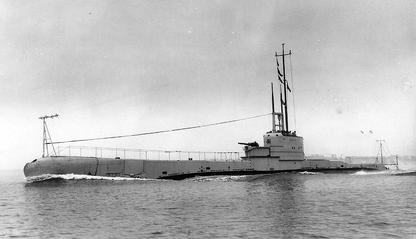
HMS Regulus was built at Vickers-Armstrong at Barrow-in-Furness, stationed with the fourth Submarine Flotilla on the China station out of Hong Kong. In October 1939 she started a dangerous intel mission in the mouth of the Bungo Strait, off the coast of Japan, and observed IJN fleet exercises including several aircraft carriers. She even later entered Shibushi Bay and Osaka Bay to take photos. Back in the Mediterranean like the rest of the class, she made a patrol under command of Lt.Cdr. Frederick Basil Currie, from Alexandria to the southern Adriatic on 23 November 1940 but presumed los on 6 December 1940 off Taranto, probably hitting a mine.
 HMS Rover
HMS Rover
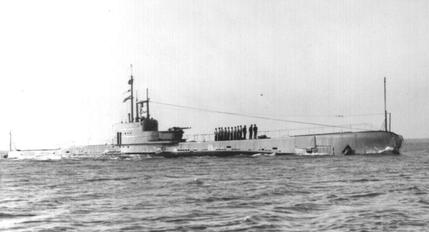
HMS Rover was commissioned on 29 January 1931, assigned like her sisters to the 4th Submarine Flotilla, China Station. In 1939 she was repatriate to Alexandria and patrolled the Suez canal, after being transferred via Singapore in early 1940. She teamed with the RAN in the Mediterranean, from Aden (August) and in early 1941 attacked Italian convoys.
In April 1941 during the Battle of Crete she was in Souda Bay helpint the crew of HMS York. On 24 April she was attacked by Stukas and bandly damaged. She was saved, but had to be towed to Alexandria and then Singapore for full repairs. She stayed there, to stem the Japanese advance in ealry 1942, operating from Bombay. She operated off Trincomalee, Ceylon and allegedly sunk ten Japanese ships during her numerous patrols. In 1945 she was a TS. She was sold for BU and scrapped on 30 July 1946.
 HMS Regent
HMS Regent
Like the others, HMS Regent was based in the China Station, 4th flotilla, and in April-May 1940 transferred to the 1st Submarine Flotilla in Alexandria, Egypt. From there she started a long wartime patrol career against axis convoys. She sank or damaged four ships during her career: On 5 October 1940 the 188 GRT Maria Grazia, and on 9 October the 5,900 GRT Antonietta Costa (so badly damaged she was a Total Loss), then on she sank on 15 January 1942 the 2,742 GRT Città di Messina and on 21 February 1942 the German-held Menes (5,609 GRT), badly damaged and written off.
He loss was a bit of a mystery. The most likely theory is that she was attacking a railways on 16 April 1943 in the Gulf of Taranto, engaged by the Italian corvette Gabbiano. She survived and two days later attacked a convoy off Monopoli but missed. An explosion was heard and now it is believed she hit a mine.
Read More
Books
Conway’s All the World’s Fighting Ships 1921-47
Akermann, Paul (2002). Encyclopaedia of British Submarines 1901–1955 (reprint of the 1989 ed.). Penzance, Cornwall: Periscope Publishing
Bagnasco, Erminio (1977). Submarines of World War Two. Annapolis, Maryland: Naval Institute Press.
Caruana, Joseph (2012). “Emergency Victualling of Malta During WWII”. Warship International.
Colledge, J. J.; Warlow, Ben (2006) [1969]. Ships of the Royal Navy: The Complete Record of all Fighting Ships of the Royal Navy (Rev. ed.). Chatham Publishing.
McCartney, Innes (2006). British Submarines 1939–1945. New Vanguard. Vol. 129. Oxford, UK: Osprey.
Links
https://uboat.net/allies/warships/class.html?ID=47
https://www.battleships-cruisers.co.uk/rainbow_class.htm

 Latest Facebook Entry -
Latest Facebook Entry -  X(Tweeter) Naval Encyclopedia's deck archive
X(Tweeter) Naval Encyclopedia's deck archive Instagram (@navalencyc)
Instagram (@navalencyc)





 French Navy
French Navy Royal Navy
Royal Navy Russian Navy
Russian Navy Armada Espanola
Armada Espanola Austrian Navy
Austrian Navy K.u.K. Kriegsmarine
K.u.K. Kriegsmarine Dansk Marine
Dansk Marine Nautiko Hellenon
Nautiko Hellenon Koninklije Marine 1870
Koninklije Marine 1870 Marinha do Brasil
Marinha do Brasil Osmanlı Donanması
Osmanlı Donanması Marina Do Peru
Marina Do Peru Marinha do Portugal
Marinha do Portugal Regia Marina 1870
Regia Marina 1870 Nihhon Kaigun 1870
Nihhon Kaigun 1870 Preußische Marine 1870
Preußische Marine 1870 Russkiy Flot 1870
Russkiy Flot 1870 Svenska marinen
Svenska marinen Søværnet
Søværnet Union Navy
Union Navy Confederate Navy
Confederate Navy Armada de Argentina
Armada de Argentina Imperial Chinese Navy
Imperial Chinese Navy Marinha do Portugal
Marinha do Portugal Mexico
Mexico Kaiserliche Marine
Kaiserliche Marine 1898 US Navy
1898 US Navy Sovietskiy Flot
Sovietskiy Flot Royal Canadian Navy
Royal Canadian Navy Royal Australian Navy
Royal Australian Navy RNZN Fleet
RNZN Fleet Chinese Navy 1937
Chinese Navy 1937 Kriegsmarine
Kriegsmarine Chilean Navy
Chilean Navy Danish Navy
Danish Navy Finnish Navy
Finnish Navy Hellenic Navy
Hellenic Navy Polish Navy
Polish Navy Romanian Navy
Romanian Navy Turkish Navy
Turkish Navy Royal Yugoslav Navy
Royal Yugoslav Navy Royal Thai Navy
Royal Thai Navy Minor Navies
Minor Navies Albania
Albania Austria
Austria Belgium
Belgium Columbia
Columbia Costa Rica
Costa Rica Cuba
Cuba Czechoslovakia
Czechoslovakia Dominican Republic
Dominican Republic Haiti
Haiti Hungary
Hungary Honduras
Honduras Estonia
Estonia Iceland
Iceland Eire
Eire Equador
Equador Iran
Iran Iraq
Iraq Latvia
Latvia Liberia
Liberia Lithuania
Lithuania Mandchukuo
Mandchukuo Morocco
Morocco Nicaragua
Nicaragua Persia
Persia San Salvador
San Salvador Sarawak
Sarawak Uruguay
Uruguay Venezuela
Venezuela Zanzibar
Zanzibar Warsaw Pact Navies
Warsaw Pact Navies Bulgaria
Bulgaria Hungary
Hungary

 Bundesmarine
Bundesmarine Dutch Navy
Dutch Navy Hellenic Navy
Hellenic Navy Marina Militare
Marina Militare Yugoslav Navy
Yugoslav Navy Chinese Navy
Chinese Navy Indian Navy
Indian Navy Indonesian Navy
Indonesian Navy JMSDF
JMSDF North Korean Navy
North Korean Navy Pakistani Navy
Pakistani Navy Philippines Navy
Philippines Navy ROKN
ROKN Rep. of Singapore Navy
Rep. of Singapore Navy Taiwanese Navy
Taiwanese Navy IDF Navy
IDF Navy Saudi Navy
Saudi Navy Royal New Zealand Navy
Royal New Zealand Navy Egyptian Navy
Egyptian Navy South African Navy
South African Navy






























 Ukrainian Navy
Ukrainian Navy dbodesign
dbodesign